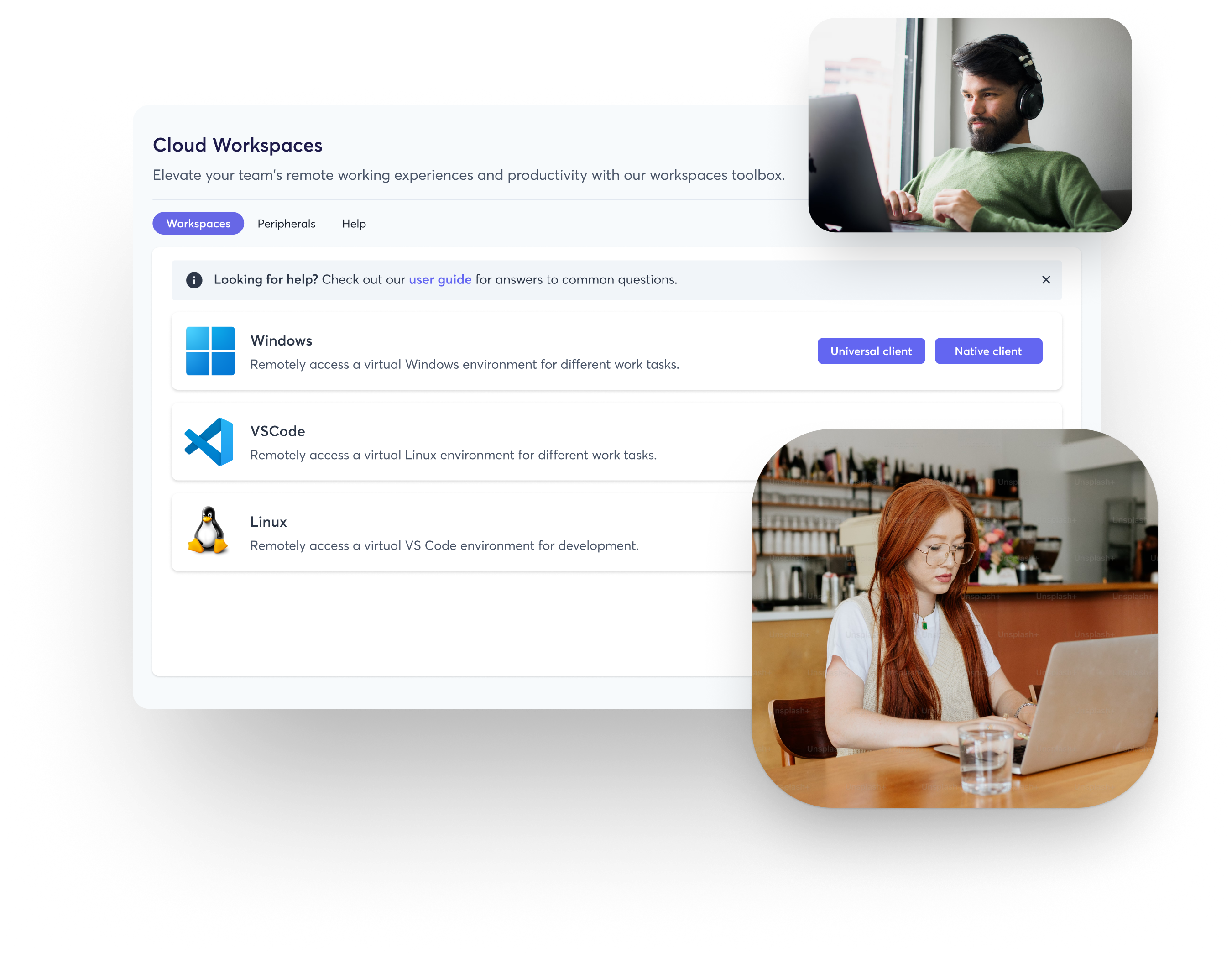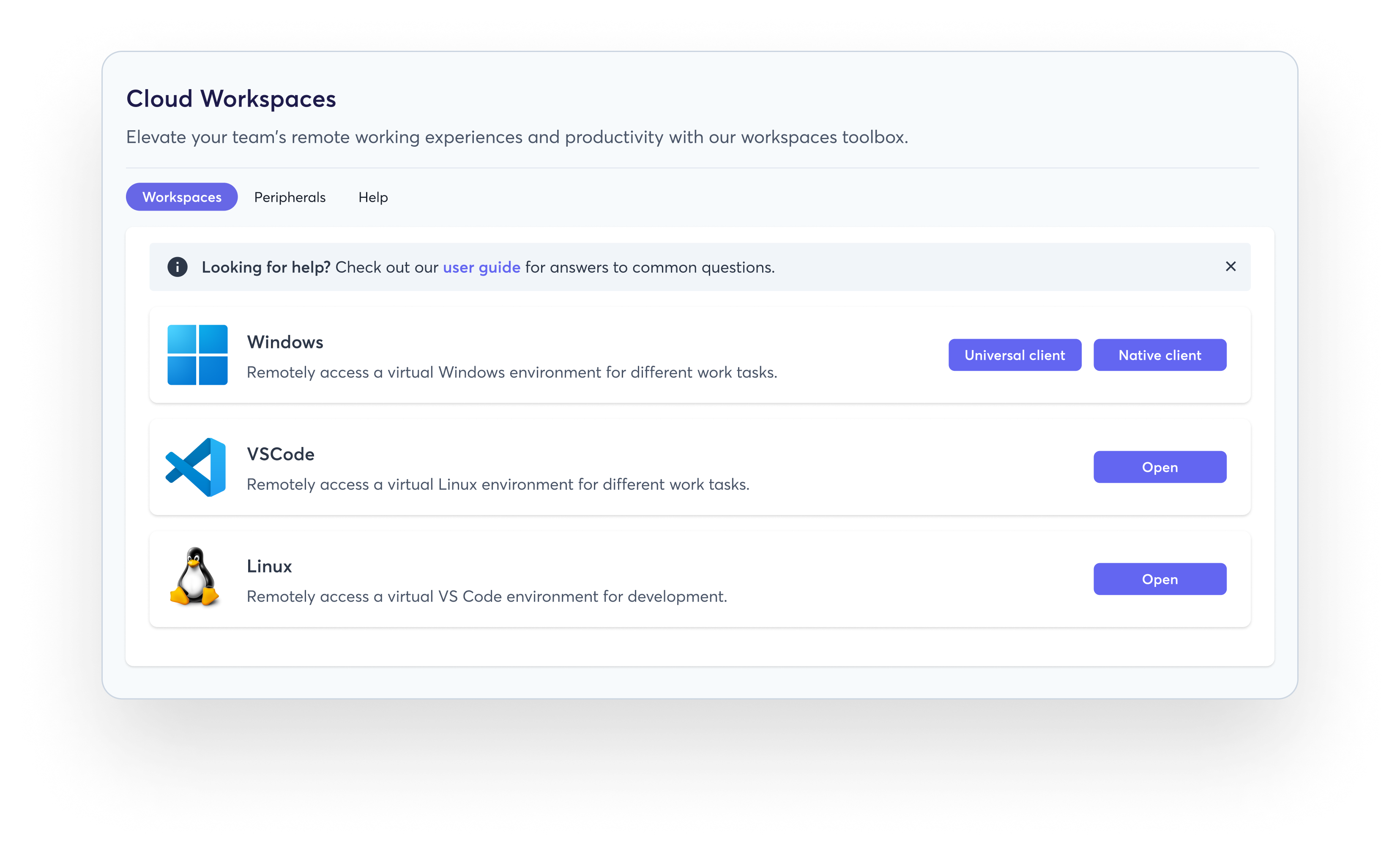Remote Desktops at the Edge
Power up your remote people with virtual Windows and Linux environments that are fast and secure.

Challenge
Globally distributed workforces need to be connected to their apps and communication tools. Traditional virtual desktop infrastructure can be sluggish due to centralization and cloud latency, and can be complex and expensive to install, configure, and operate securely with performance.
Solution
Macrometa makes it easy, affordable, and performant for your users to remotely access their work computers and applications from the field. Macrometa runs the operating system and applications on powerful edge servers nearby, delivering full functionality with low latency and high reliability.
Key Benefits
Flexibility and productivity for remote work
Exceptional performance thanks to edge computing
Robust security for your sensitive data & applications
Cost-effective: only pay for what you use, leverage current devices
Access control supporting popular authentication methods
Enhanced data privacy to ensure global regulatory compliance
How Edge Desktops Work
How can remote systems run advanced applications with performance and security? In essence, your device becomes the user interface - the applications actually run on powerful edge servers nearby for snappy performance.
Macrometa Remote Desktops at the Edge
How can you run your work desktop applications on remote machines?
Field Laptop
Any Laptop
- Browser
Windows Laptop
- Browser, or
- Native Client
Secure Connection
Regional Internet
- HTTPS
- WebSocket Source
Your Virtual Work Computer
Regional Internet
- HTTPS
- WebSocket Source
Users experience low latency communication with nearby servers
Remote Desktops at the Edge provides full-featured Windows and Linux virtual desktop environments accessible from laptops with an internet connection. These virtual desktops are hosted at the edge, enabling users to perform intensive workloads with less powerful machines. Edge Desktops ensures consistency and flexibility, enabling users to maintain productivity regardless of location at a fraction of the cost of traditional VDI (virtual desktop infrastructure).
Flexible Deployment of Virtual Desktop Infrastructure
Remote Desktops at the Edge supports two distinct types of Virtual Desktop Infrastructure (VDI):
Persistent VDI: A persistent VDI retains your user session even after you log out, allowing you to resume your previous session and retain your work progress.
Non-persistent VDI: With non-persistent VDI, logging out of a session terminates that session. A new session is started upon logging back in, and previous session data is not retained.

For Windows devices, there are two client options for access:
Universal client: The universal client provides access to the virtual desktop directly through a web browser. This method is accessible to users on a range of devices.
Native client: The native client allows you to connect to the virtual Windows desktop using RDP client on your Windows machine. The Native Client is currently only available for Windows.
For Linux and MacOS devices, the Universal Client is required for access.
Universal client: The universal client provides access to the virtual desktop directly through a web browser. This method is accessible to users on a range of devices.
Peripheral Devices
The remote desktop environment supports the following peripheral devices:
- Keyboard
- Mouse
- Printer
- Camera
- Speaker
Simple for Users
WiIth just a few steps, users can quickly and securely log in and access their familiar work environment.
Power up your remote workforce with Remote Desktops at the Edge
They'll have a normal desktop experience - just as if all the apps were downloaded locally to the machine. It'll be fast, consistent, and secure, because the OS and applications are running at the network edge.
Talk to an Expert